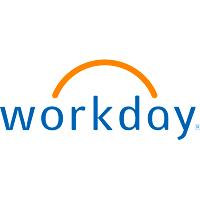How to create an analytics mindset within your finance team
Make no mistake: Robust analytic capabilities increase insight into business performance, allowing FP&A teams to make better decisions. And better...
3 min read
 Workday Adaptive Planning
:
Feb 4, 2021 9:00:00 AM
Workday Adaptive Planning
:
Feb 4, 2021 9:00:00 AM

In a volatile, ever-changing market as we are now experiencing with the pandemic, businesses must be nimble to survive—if not thrive. Yet many companies still use outmoded financial systems to track progress and predict success. They rely on static budgets that are updated just once a year and quickly become dated. In fact, a majority of annual forecasts are obsolete after just four to six months. Static budgets are not only unreliable for long-term planning, but they are also a major obstacle to agile decision-making.
The COVID-19 pandemic is having an unprecedented impact on the world’s population health, economies, and organizations. For the latter, executives now have substantial uncertainties about how to manage their operations. This includes strategic actions and financial projections. Financial projections are critical to understand forecast net cash flows to prevent bankruptcies.
Whether updated weekly, monthly, or quarterly—rolling financial forecasts are by design more current and, therefore, more accurate. But did you also know that the greater cadence of a rolling financial forecast can actually boost the company’s bottom line? In a study from a few years back, organizations that performed rolling forecasts saw 10% revenue growth over the previous 24 months, in comparison to 7% growth for organizations that did not.
Additional problems with the annual budget are: It is disconnected from the executive team’s strategy, and it does not adequately reflect future demand volume drivers. The budget exercise is often scorned as taking months to create after multiple executive “tweaks” to arrive at the numbers they want. It is also typically biased by the most politically muscled managers who know how to sandbag their department’s budget request.
If your FP&A team has been considering a rolling financial forecast for some time, here are three under-the-radar reasons that might finally get them off the fence and help convince everyone on the team that now is the time to get “rolling”:
With a static budget, it can be labor- and time-intensive to predict the effect certain decisions will have on key drivers that influence bottom-line profits. But with a rolling financial forecast, scenario planning with sensitivity analysis (e.g., assuming changes with variables such as the sales volume and mix) and modeling can be as simple as plugging in a few critical numbers. For instance, say you’re presented with a highly qualified job candidate or an acquisition opportunity. Getting data-driven insights on whether to pull the trigger on that hire or that acquisition can be done more quickly—and more accurately—in a rolling environment. And that may mean the difference between seizing a business opportunity and watching it slip by.
It’s a myth that rolling financial forecasts are a short-sighted tool. Yes, their cadence is more frequent than an annual budget, but they tend to project eight quarters in the future, well beyond the fiscal end-period wall. This allows for quarterly (even monthly) pro forma income statement and balance sheet projections from which the now all-important net cash flow is derived. And because the FP&A team is digging into the numbers frequently—but also eyeing the horizon—it becomes easier to spot and course-correct when projected expenses or estimated sales volumes are higher or lower than expected. This tool is particularly valuable for a company’s sales department. If they aren’t hitting their targets this quarter or this year, those underages will only compound over the years. A rolling financial forecast can help course-correct today to get back on track for tomorrow.
The power of a rolling financial forecast lies in its ability to continuously update a company’s outlook based on real-time data, input from informed managers, and educated calculations. But once the fiscal books are closed for the quarter or year, many teams are surprised by the boost they get by swiftly integrating their actuals—which makes for an even more accurate budget and more and deeper insights for the future.
With a smartly designed rolling financial forecast, you’ll be able to pull in this data very quickly and with minimal effort, especially compared with the annual budget creation process. In fact, many systems utilize a direct integration and automation, which means with one click of a mouse, all of the information is imported from across the various departments or cost centers, possibly within just minutes of the fiscal books being closed. No one has to manually key-in the information—and risk typos and data errors being introduced. A centralized hub for this data also reduces confusion and miscommunication.
Odds are, everyone in your finance department knows the high-level benefits of a rolling financial forecast. What they might not realize are all of the lesser-known reasons to get on the rolling financial forecast bandwagon. And though some team members may fear a rough transition or a steep learning curve, fear not: The transition tends to be faster and smoother than even the staunchest resisters fear. And the payoff is well worth it!
With rolling financial forecasts, the accountants can transition from bean counters to bean growers.

Business Solution Partners can equip you with the tools required to maintain a rolling financial forecast. Contact us to learn more about services that can help make your business more agile.
Article republished from Workday Adaptive Planning with permission.

Make no mistake: Robust analytic capabilities increase insight into business performance, allowing FP&A teams to make better decisions. And better...

If you use Management Reporter for your financial reporting it’s time for a change. While Management Reporter has been recently developed and is the...

Every month, quarter, fiscal year end. It just never stops, and it never will. But we do it, and we get it done. It’s the reason why we wake up on...